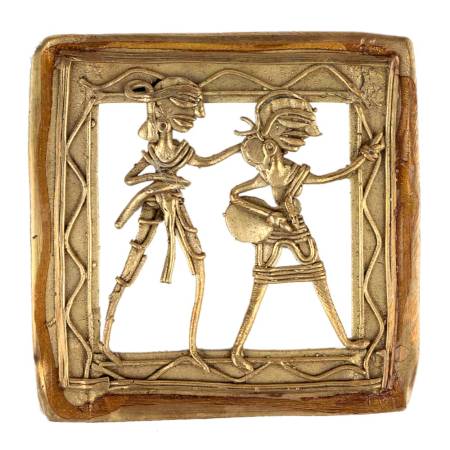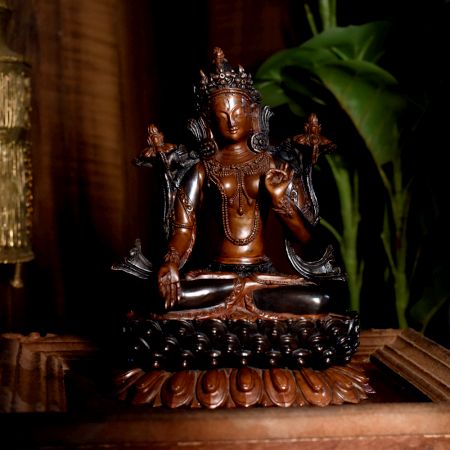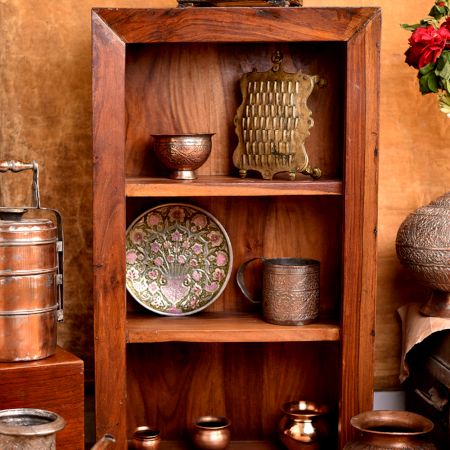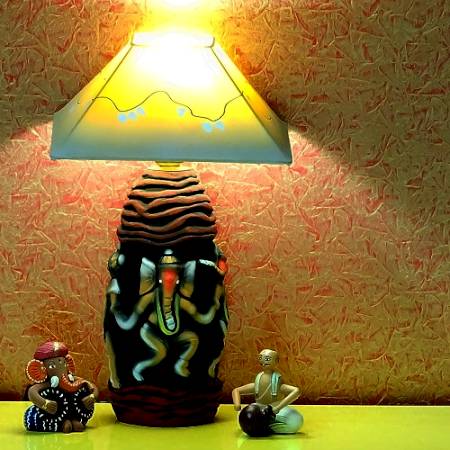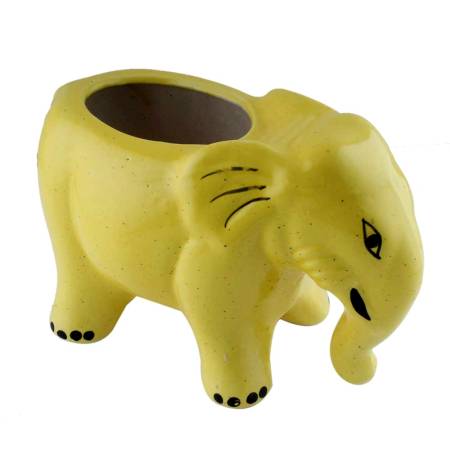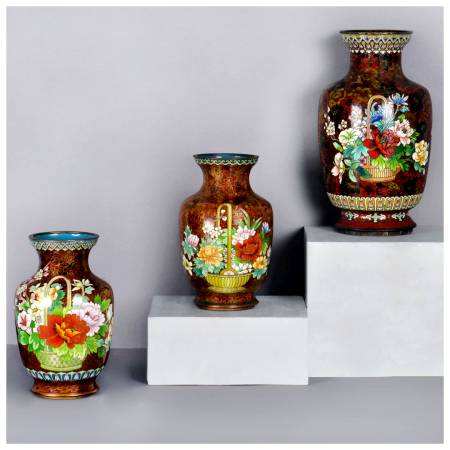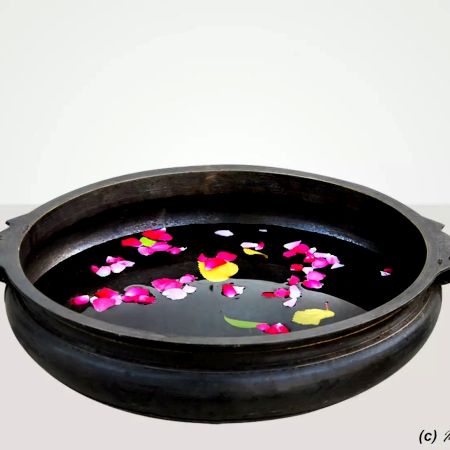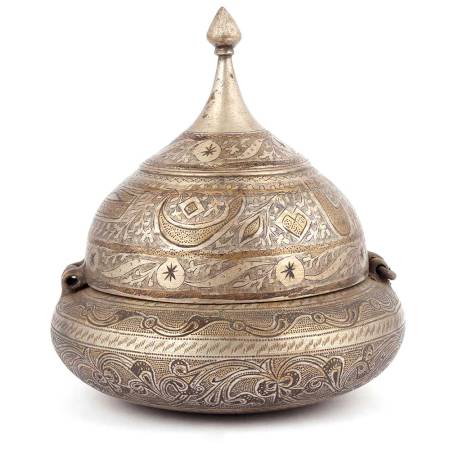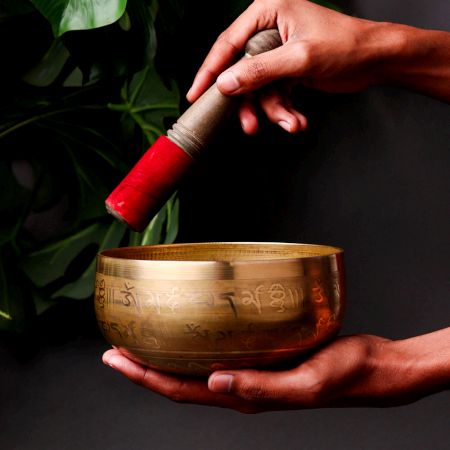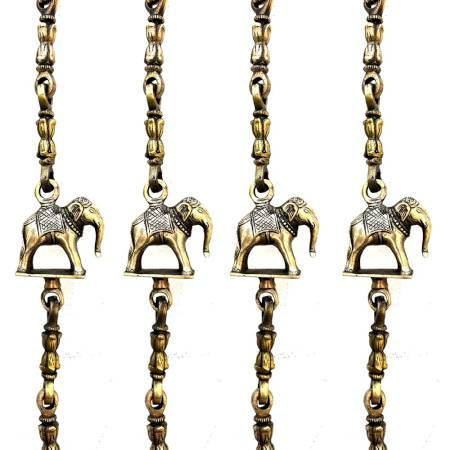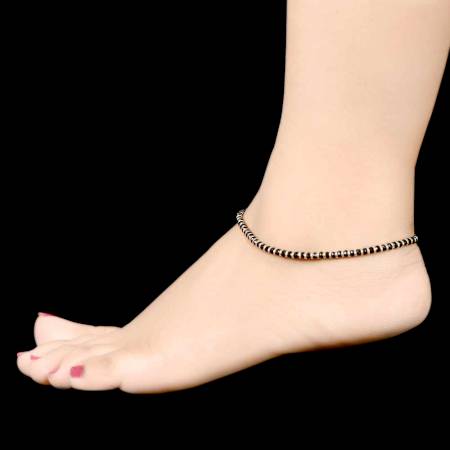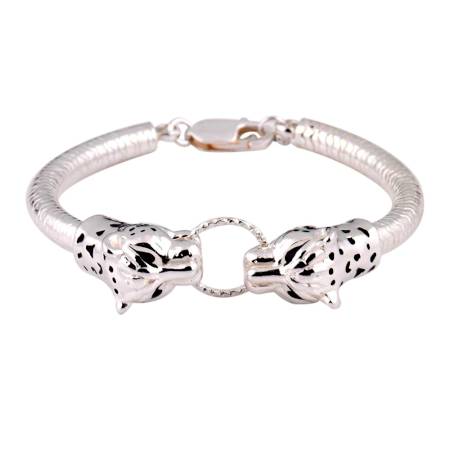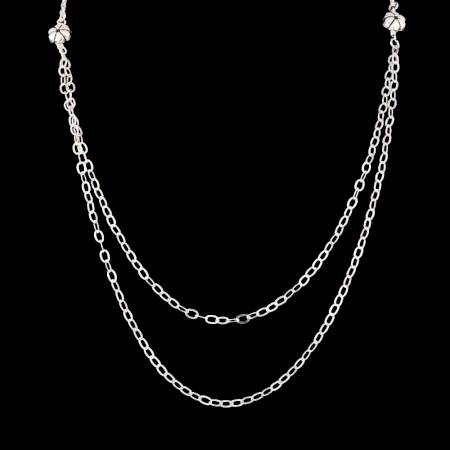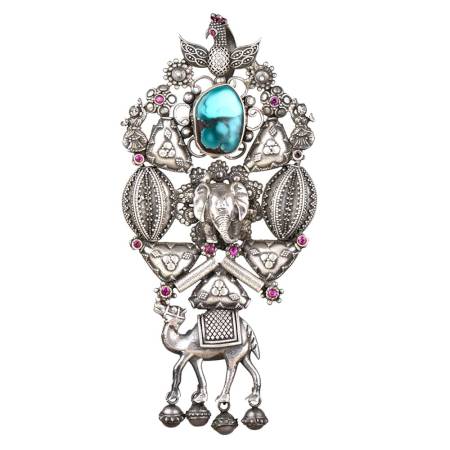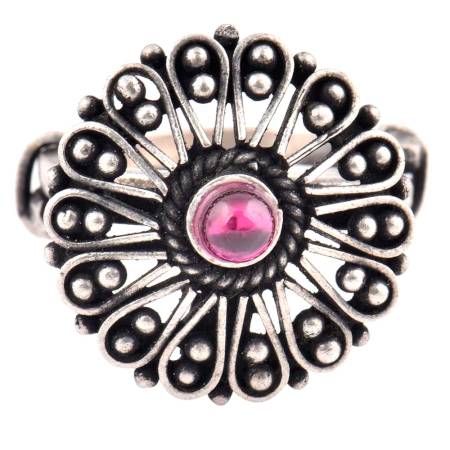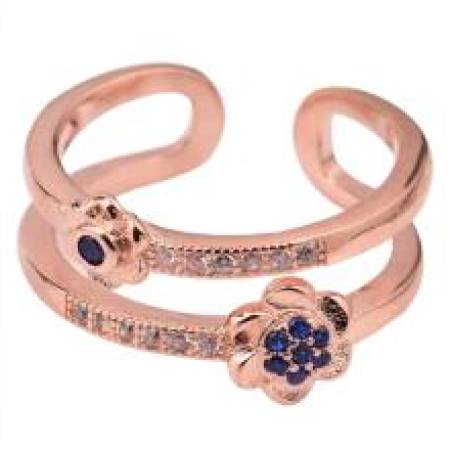-
Boho Labradorite Silver Ring 925 Sterling Silver Handmade Gemstone Jewelry
- ₹ 3,440.00
-
Only a few left
-
Blue Copper Turquoise Cabochon 925 Sterling Silver Ring Handmade Boho Jewelry
- ₹ 3,440.00
-
Only a few left
-
Handmade Black Onyx Ring 925 Sterling Silver Boho Gemstone Jewelry for Women
- ₹ 3,270.00
-
Only a few left
-
Blue Copper Turquoise Moon 925 Sterling Silver Ring Handmade Boho Jewelry
- ₹ 3,270.00
-
Only a few left
-
Handmade 925 Sterling Silver Labradorite Ring Crescent Moon Design for Women
- ₹ 3,270.00
-
Only a few left
-
Dainty Amethyst Crescent Moon Ring 925 Sterling Silver Handmade For Women
- ₹ 3,100.00
-
Only a few left
An Guide to Silver Jewellery: Elegance, Versatility, and Luxury
General Understanding of Silver Jewellery
Silver jewellery isn’t just metal shaped into ornaments. It’s memory turned tangible. Across centuries, silver has reflected the essence of beauty, ritual, and belonging. Every bangle, ring, or anklet carries a quiet conversation between culture and craft. In Indian homes, it shines in temples, marriages, and heirlooms, always close to skin and spirit. Its understated glow tells stories of both luxury and humility, tradition and rebellion. Whether oxidized or polished, worn daily or displayed as art, silver jewellery carries an enduring resonance, one that connects the wearer to time, earth, and artistry with an elegance gold often overshadows.
What Is Silver Jewellery?
Silver jewellery is a form of personal expression crafted from pure or sterling silver, often alloyed with copper for strength and longevity. For centuries, silver has adorned kings, tribes, and artists alike. In rural India, women wore it as protection and pride, while in modern cities, it adorns wrists and collars as fashion statements. Silver sits beautifully between extravagance and restraint, it never shouts but always shines. The craft involves meticulous shaping, heating, and polishing to preserve its inherent luminosity. In essence, silver jewellery isn’t defined by its cost but by its quiet ability to age gracefully with its owner.
What Emotions Or Themes Does Silver Jewellery Commonly Portray?
Silver carries emotion in silence. Its soft gleam suggests purity, while its cool tone evokes serenity. Across cultures, silver jewellery represents identity, of region, tribe, or personal taste. It’s both a mirror and a memory. A silver ring may remind one of love’s promise, an oxidized bangle may hold a grandmother’s warmth. Emotionally, silver is intimate, it molds to skin and time, absorbing stories. Artists use motifs of flora, deities, and geometry to communicate devotion or power. Its beauty lies not just in the shimmer but in its ability to preserve the emotional fingerprints of generations that have touched it.
What Are the Most Recognized Styles in Silver Jewellery?
Silver jewellery styles range from the delicate filigree of Cuttack to the bold tribal patterns of Bastar. Each region, each artisan, adds a voice to its vocabulary. Jaipur’s meenakari brings bursts of color, South India’s temple jewellery invokes divinity, and the North favors oxidized silver for its earthy elegance. Globally, artisans blend these traditions with modern silhouettes, geometric earrings, sculpted cuffs, or fluid rings. What binds these diverse forms is silver’s versatility, it can be rustic or refined, vintage or avant-garde. Each style tells a story of cultural rhythm, merging ancestral craft with contemporary design sensibilities.
Why Is Silver Jewellery Still Revered in the Contemporary Fashion World?
Silver jewellery endures because it embodies balance between history and modernity, luxury and accessibility. It complements both linen and silk, denim and drape. In a world driven by trends, silver resists obsolescence by staying honest to craftsmanship. Its sustainable nature also appeals to today’s conscious buyers, eco-friendly, recyclable, and ethically rooted. From runway fashion to minimalist daily wear, silver adapts seamlessly. It’s not merely an accessory, it’s identity worn as art. The reverence for silver lies in its democratic beauty, it belongs equally to artisans in small villages and designers on global stages, never losing its soulful character.
Techniques, Mediums & Craftsmanship in Silver Jewellery
Behind every piece of silver jewellery lies a quiet rhythm of labour, heat, and patience. It begins not with design but with devotion. Generations of artisans have shaped silver with their hands, blending precision with feeling. The sound of hammer against metal carries the heartbeat of heritage. In India, silver is not only a metal but a living tradition, one that absorbs regional influences and family secrets. Every curve, motif, and polish is a dialogue between past and present. Craftsmanship here is not just a skill, it’s a sacred practice that transforms ordinary silver into a form of storytelling.
How Is Silver Jewellery Traditionally Crafted?
Traditional silver jewellery is shaped through time-tested processes that balance precision and instinct. Artisans begin by melting silver and alloying it with a small portion of copper to strengthen the base. The metal is then drawn into thin sheets or wires and moulded by hand into intricate forms. Techniques like filigree, engraving, embossing, and casting give each piece its character. In regions like Rajasthan or Odisha, artists rely on basic tools and ancient methods, often learned through lineage. What makes this process remarkable is its human touch. Machines can replicate shape, but not the emotional imprint of the maker.
What Materials Are Commonly Used Alongside Silver?
Silver rarely stands alone. Artisans complement it with stones, glass beads, enamel, or pearls to enhance visual dialogue. Semi-precious gems like turquoise, coral, and lapis lazuli find their place in silver’s cool tone, creating a balance between earthiness and brilliance. In traditional Indian jewellery, vibrant meenakari work adds a burst of colour, while tribal designs may incorporate shells or wooden beads. Each addition serves a purpose, either symbolic or aesthetic. The choice of materials not only enhances beauty but also extends the story of the piece, bridging natural elements with refined artistry in a distinctly cultural expression.
What Role Do Texture And Finish Play In Silver Jewellery?
Texture in silver jewellery is more than a surface quality, it defines personality. A hammered necklace speaks of strength and imperfection, while a smooth, polished bracelet suggests grace and calm. Oxidized finishes, darkened through controlled chemical processes, create depth and antique charm. In contrast, high-gloss finishes mirror light and motion, giving silver a contemporary edge. The choice between these finishes reflects both maker and wearer. In Indian craft traditions, artisans use texture to highlight divine motifs or tribal energy, turning light and shadow into language. Texture transforms silver from metal into mood, from object into emotion.
Artistic Intent and Visual Storytelling of Silver Jewellery
Silver jewellery is not merely worn, it is lived with. Every pendant, anklet, or ring holds more than beauty, it carries intent. Artisans often design not for fashion but for feeling. Through symbols, textures, and stories, they build a silent narrative that reflects human emotion and collective memory. A single engraved motif can reveal devotion, rebellion, or desire. Across centuries, silver has spoken for those who could not express in words. Its designs mirror myths, rituals, and personal faith. To understand silver jewellery is to read its quiet storytelling, where metal breathes life into meaning and emotion.
What Stories Or Messages Does Silver Jewellery Aim To Convey?
Each piece of silver jewellery is a reflection of story and sentiment. In India, motifs like the lotus symbolize purity, while the peacock stands for beauty and rebirth. Tribal designs often carry protective emblems that guard against negative energies. Beyond these traditional meanings, modern artisans reinterpret silver to express individuality or rebellion. A ring might signify independence, a pendant might mark remembrance. Through its symbolism, silver becomes a diary of human experience. It bridges emotion and design, merging cultural myths with personal memory, transforming ordinary ornaments into wearable narratives that speak in quiet, luminous tones.
How Do Artisans Express Cultural Or Spiritual Symbols Through Silver Designs?
Artisans use silver as a language of faith, culture, and continuity. Ancient craftsmen believed the metal absorbed lunar energy, aligning it with purity and protection. In many Indian traditions, silver ornaments are offered to deities or worn during sacred rituals. Designs often carry symbols like conch shells, suns, elephants, and vines, each bearing spiritual or cosmic resonance. Contemporary designers reinterpret these motifs with abstract precision, keeping tradition alive within modern aesthetics. Silver, with its mutable shine, mirrors both divinity and human imperfection. Through each chisel mark and curve, artisans translate belief into visible, tangible form.
How Do Light, Texture, And Finish Influence The Mood Of Silver Jewellery?
Light transforms silver into emotion. Its reflection and shadow determine how a piece feels on the skin or in the room. Matte textures absorb light, creating a grounded, earthy tone. Polished finishes scatter it, evoking fluidity and elegance. Oxidized surfaces capture mystery, often associated with vintage or tribal appeal. In Indian craft, artisans play with contrast, highlighting divine figures or intricate carvings through shifts in sheen. This dance between light and texture makes every silver piece dynamic, alive. It’s never static. It changes mood with its surroundings, adapting to the energy and essence of its wearer.
Purchase, Collection & Investment of Silver Jewellery
Owning silver jewellery is both a pleasure and a responsibility. It’s not just an act of purchase but a choice of heritage. When one buys a piece of silver, one acquires a story, something shaped by hands, passed through time, and built on memory. Collectors see silver as an evolving conversation between artistry and value. Each design represents a moment in craft history. Some collect for emotion, others for investment, yet both meet at the same truth. Silver jewellery never loses its place. It only deepens with time, carrying both sentimental and material worth in quiet brilliance.
Where Can You Buy Authentic Or Designer Silver Jewellery?
Authentic silver jewellery can be found where craftsmanship is valued over convenience. Trusted artisans, heritage stores, and curated online platforms like IndianShelf carry pieces rooted in tradition and quality. Local markets in Jaipur, Cuttack, or Udaipur often hold treasures that combine history with artistry. Modern buyers also turn to designer boutiques that blend Indian motifs with international minimalism. When purchasing, focus on origin, hallmark, and finish. True silver speaks through its touch and tone. It feels alive, heavier, and warmer than imitation. Buying authentic silver is not about trend, it’s about timeless connection to artistry.
How Can You Verify The Authenticity Of Silver Jewellery?
Authenticity lies in the details. Genuine silver jewellery carries hallmark stamps like 925 or BIS certification, confirming its purity and composition. Real silver has a gentle shine, not a glaring gloss. It tarnishes slowly, unlike imitation metal that dulls or peels. Magnet tests help too, silver never clings to magnets. In India, traditional artisans often leave subtle hand marks, small imperfections that indicate human touch. Buyers can also use nitric acid testing for confirmation, though it should be done carefully. Authentic silver does not just reflect light, it reflects trust, history, and craftsmanship that cannot be mass produced.
What Makes Silver Jewellery A Worthwhile Investment?
Silver jewellery holds value that extends beyond market trends. Financially, it is a tangible asset, a precious metal that retains worth even in fluctuating economies. Artistically, it grows richer with time as patina and texture add character. Emotionally, it’s a legacy, something one can pass down. The current global shift toward sustainable fashion has increased silver’s appeal, positioning it as both ethical and elegant. Unlike disposable fashion, silver endures. Whether worn daily or preserved as collectible art, its beauty matures. The true investment is not only in metal but in meaning, in owning a piece that ages with grace.
Care, Framing & Preservation of Silver Jewellery
Silver jewellery ages like poetry. Its beauty deepens with touch, air, and time, yet it needs care to retain that quiet glow. Proper maintenance ensures that the silver you wear today can one day be worn by another generation. It’s a form of respect toward craftsmanship, a way of keeping its story alive. Each piece, whether antique or newly crafted, holds a surface memory that responds to how it’s treated. Preservation is not just a routine, it’s an emotional act of continuity and appreciation.
How Do You Properly Store And Maintain Silver Jewellery?
Storage defines longevity. Silver must be kept away from moisture, air pollutants, and harsh chemicals that cause tarnish. Each piece should be wrapped in a soft cloth or placed in an anti-tarnish pouch. Avoid keeping multiple items together, as friction can dull their finish. Clean your jewellery gently using a mild soap solution and a soft brush, then pat dry completely. Regular care is better than occasional polishing. A small routine every month preserves its tone and texture. In caring for silver, you’re preserving not just metal but memory, the warmth of hands that shaped it.
What Frames And Materials Best Complement The Silver Aesthetic?
The right setting enhances the soul of silver. Frames, boxes, and display units crafted from wood or glass often complement silver’s timeless grace. Minimalist frames highlight its purity, while carved wooden holders add depth and contrast. Fabrics like velvet or suede work beautifully as backdrops, reflecting light softly onto the metal. For personal collections, humidity-controlled cases prevent tarnish while maintaining an aura of luxury. Whether displayed on a dressing table or inside a cabinet, silver looks best when surrounded by textures that echo its natural simplicity and historical richness.
Can Old Silver Jewellery Be Restored Without Losing Its Original Feel?
Restoration is a balance between revival and respect. Skilled artisans can clean, reshape, or re-polish vintage silver pieces while retaining their original charm. Over-polishing should be avoided, as it erases the subtle patina that gives old silver its soul. When done mindfully, restoration brings life back to a piece without disturbing its authenticity. Techniques like gentle hand buffing or ultrasonic cleaning can revive the shine, but each process must honor the story it carries. True restoration doesn’t make silver new again, it helps it breathe the same beauty in a new moment.
What Are Common Damages Silver Jewellery Suffers Over Time?
Time leaves marks on silver, and some are worth keeping. Tarnish, scratches, and dulling occur naturally due to exposure to air, sweat, and environmental elements. Occasionally, silver chains may loosen, or filigree details may bend. These are not flaws but signs of life, traces of wear that narrate how it was loved. However, regular cleaning and timely restoration prevent deep corrosion. The key lies in balance — maintaining shine without erasing age. Every mark has meaning, and when cared for, even aged silver glows with quiet resilience and emotional grace.
Cultural Impact & Historical Legacy of Silver Jewellery
Silver jewellery has always lived in the quiet corridors of heritage. Shaped by hands that understood both devotion and design. It isn’t just metal; it’s history melted into wearable art. From temple offerings to royal ornaments, its presence marked every passage of time. Across civilizations, silver became a symbol of continuity, graceful, adaptable, and enduring. It connects rituals to rebellion, festivals to fashion. Each piece, when observed closely, carries whispers of where it came from and what it once meant to those who wore it. This is not mere adornment; it’s civilization in miniature.
What Is The Historical Significance Of Silver Jewellery Across Civilizations?
Across civilizations, silver has always mirrored humanity’s search for light and purity. In Egypt, it was rarer than gold, representing the moon’s divinity. The Greeks adorned warriors with silver talismans believed to offer protection. In India, silver became the language of prosperity, woven into anklets, bangles, and bridal sets that symbolized eternal blessings. Unlike gold, which spoke of power, silver carried intimacy; its softness and shine linked to emotion rather than hierarchy. Over time, it moved from temples to homes, from ritual to daily wear, reflecting how deeply it merged with both spirituality and craft. Today, that connection still gleams softly in every design.
How Did Different Cultures Contribute To Silver Craftsmanship?
Every culture left fingerprints on the silver we wear. The intricate filigree from Italy, the vibrant meenakari from India, and the turquoise-set patterns of Native America each tell different stories through shared craftsmanship. Indian silversmiths drew from mythology; Italian artisans from Renaissance detailing; while Middle Eastern craftsmen introduced geometric precision. These exchanges shaped a global narrative of silver, where belief met beauty. Over centuries, techniques evolved but emotions remained; the desire to immortalize art in metal. Silver, adaptable by nature, absorbed every cultural rhythm and continues to harmonize tradition with modern artistry.
Which Artisans And Regions Shaped The Evolution Of Silver Jewellery?
In India, Rajasthan’s Kundan artists, Odisha’s filigree masters, and Gujarat’s tribal smiths defined silver’s soul. Each region contributed not only technique but also philosophy. Rajasthani designs reflected royalty, while tribal artisans focused on symbolism, spirals of fertility, motifs of unity. Across Asia and Europe, small artisan communities guarded family secrets of soldering, engraving, and oxidizing. Their tools were simple, but their patience infinite. Every stroke carried reverence for the material. Today, as machines mimic their precision, the human touch still reigns supreme. The legacy of these craftsmen endures, passed quietly, from one hand to the next, like a secret well-kept promise.
Silver Jewellery vs Other Ornament Forms
Silver jewellery stands in a space between grace and grit. It doesn’t shout wealth; it whispers depth. While gold dazzles, silver feels lived-in, personal, approachable. It has been worn by farmers and queens alike, finding its place in every skin tone, every culture. Unlike other metals, silver reflects the wearer’s mood; it can appear modern or ancient, polished or worn, grand or simple. This flexibility makes it timeless in fashion and decor alike. Its charm lies in duality, both understated and powerful, traditional and new, evolving with every generation yet never losing its ancient rhythm.
How Is Silver Jewellery Different From Gold Or Imitation Pieces?
Gold celebrates opulence; silver celebrates emotion. While gold has always been the currency of kings, silver remained close to the people, present in festivals, daily wear, and personal rituals. Unlike imitation jewellery, which replicates appearance, silver holds intrinsic worth; it matures, tarnishes, revives. Its aging is its story. Spiritually, silver connects to the moon, symbolizing peace and clarity, whereas gold links to the sun’s authority. This contrast defines silver’s soul; it’s democratic, grounding, yet mystically radiant. For many, wearing silver isn’t about status; it’s about belonging to a culture, to a memory, to a quieter, enduring kind of beauty.
What Sets Silver Jewellery Apart From Modern Accessories?
Modern accessories often follow fashion cycles; silver creates its own. It doesn’t rely on trends; it anchors them. Handcrafted silver jewellery holds detail that machines rarely replicate, uneven engravings, raw textures, the subtle imperfection that defines authenticity. While accessories chase novelty, silver carries continuity; it connects the modern mind with ancestral artistry. Culturally, silver bridges tradition with experimentation; designers now blend oxidized motifs with minimal frames, merging ancient ethos with contemporary silhouettes. Beyond aesthetics, its emotional resonance stands unmatched. Silver is not fast fashion; it’s a timeless companion, evolving but never erasing its roots.
How Do Oxidized Silver Pieces Differ From Polished Designs?
Oxidized silver and polished silver tell two sides of the same story. Oxidized pieces are poetic, shadowed, nostalgic, rooted in old temples and bazaars. Their darkened hue highlights every engraved detail, making them appear ancient and soulful. Polished silver, in contrast, is crisp, reflective, urban. It pairs with structured outfits, modern sensibilities, and minimalist decor. One speaks of memory; the other of modernity. Yet both share the same emotional architecture, purity, artistry, endurance. The choice between them isn’t about trend; it’s about temperament. Do you seek reflection or depth, shine or shadow? Silver gives you both without ever losing itself.
Emotional & Symbolic Value of Silver Jewellery
Silver jewellery breathes emotion. It’s that rare object that grows old gracefully with its owner, collecting memories like gentle fingerprints. For centuries, it’s been a symbol of protection, affection, and luck. Parents gift silver to newborns; lovers exchange it for loyalty; families pass it down as heritage. Its glow doesn’t fade; it deepens. Every scratch becomes a mark of life lived fully. Unlike transient ornaments, silver holds emotional residue; it knows the warmth of hands, the scent of rituals, the silence of time. That’s why silver remains one of the most personal materials humanity ever shaped.
Can Silver Jewellery Serve As A Meaningful Gift For Special Occasions?
Silver jewellery makes for gifts that last beyond the moment. Its symbolism, purity, healing, harmony, transcends the material. In Indian weddings, silver is offered for good fortune. In western traditions, it marks milestones like anniversaries or new beginnings. The sentiment lies in its simplicity; it suits every skin, every belief. Unlike gold’s grandeur, silver’s emotional tone feels closer to the heart, almost meditative. A silver bracelet gifted to a child becomes memory when that child grows. It’s not about price; it’s about permanence. That’s why silver gifts feel personal; they age, but never outlive their sentiment.
What Emotional Value Do Heirloom Silver Pieces Hold?
An heirloom silver piece isn’t just metal; it’s a living archive. Each dent or tarnish speaks of stories layered through generations. A grandmother’s anklet, a mother’s necklace, a father’s cufflink, these objects retain more than shine; they hold presence. Emotionally, heirloom silver connects time; it bridges what was loved before with what will be loved next. When polished anew, it glows not only with light but memory. Unlike mass-produced jewellery, heirlooms are irreplaceable because they carry essence, not trend. Passing them on becomes an unspoken ritual; a reminder that beauty, when shared through lineage, never truly fades.
Why Do People Feel A Deep Connection To Silver Jewellery?
Silver connects because it listens. Its softness mirrors emotion; its shine reflects identity. For many, wearing silver is a daily ritual, a small, intimate act of grounding oneself. It’s versatile enough to blend with modern life yet rooted in ancient belief systems. Across cultures, it’s believed to absorb energy, calm the spirit, and balance emotion. But beyond spirituality lies sentiment; the feel of cool metal against skin, the familiarity it builds over years. People connect with silver because it feels human, never perfect, always evolving, quietly luminous. It doesn’t demand attention; it earns it through quiet endurance.
Frequently Asked Questions (FAQs)
What Defines A Piece Of Jewellery As Silver?
A jewellery piece is defined as silver when its composition primarily consists of pure silver or sterling silver. Sterling silver, the most common form, contains 92.5% silver combined with 7.5% copper or other metals to enhance strength and durability. Pure silver alone is too soft for everyday wear, so this small alloy ensures longevity without compromising its natural shine. Authentic silver carries subtle hallmarks, like a “925” stamp, which confirm quality and provenance. Beyond composition, silver jewellery is also recognized by its tactile feel, cool luster, and ability to tarnish slightly over time. For collectors and wearers, silver is both an investment and a cultural artefact, linking craftsmanship with centuries of tradition, making it more than just ornamental metal.
Can Traditional Silver Jewellery Be Recreated Authentically Today?
Yes, traditional silver jewellery can be authentically recreated today by skilled artisans who honor age-old techniques. Methods such as hand-hammering, filigree, engraving, and oxidizing are still widely practiced, preserving both the design precision and cultural essence of the original pieces. Modern workshops combine these traditional skills with minimal mechanization to maintain authenticity. The recreated pieces retain the emotional depth of heritage jewellery, reflecting rituals, motifs, and regional symbolism passed through generations. Even when reinterpreted for contemporary fashion, the storytelling embedded in every curve and pattern remains intact. Owning a recreated traditional silver piece is not only about aesthetics; it is about connecting with the legacy, artistry, and enduring craftsmanship of silver artisanship.
How Do You Protect Silver Jewellery From Tarnish Or Moisture Damage?
Protecting silver jewellery begins with proper storage and careful handling. Keep pieces in anti-tarnish cloth pouches or airtight containers to minimize exposure to air and humidity, which accelerate oxidation. Avoid contact with water, perfumes, lotions, and household chemicals. Regularly polish silver with a soft, non-abrasive cloth to restore its natural shine without removing patina, which adds character over time. For long-term care, separate intricate or thin pieces to prevent scratches and tangling. Proper storage not only maintains visual appeal but also preserves emotional and cultural value. Silver jewellery, when cared for thoughtfully, can last decades, carrying both heritage and daily significance without losing its elegance or symbolic resonance.
Is Silver Jewellery Still Relevant In Modern Fashion Scenes?
Absolutely, silver jewellery remains highly relevant in contemporary fashion. Its versatility allows it to bridge tradition and trend effortlessly. Designers incorporate classic motifs, oxidized finishes, and minimalist geometric forms to appeal to modern sensibilities, making silver suitable for both casual and high-fashion styling. Unlike trend-driven metals or costume jewellery, silver carries intrinsic value, cultural depth, and emotional resonance. It complements diverse skin tones, outfits, and interiors, making it a favorite for both personal wear and decor accents. Its adaptability ensures it never feels outdated, whether integrated into avant-garde fashion statements or paired with timeless ethnic attire. Silver is simultaneously wearable art, investment, and narrative.
Can Vintage Silver Styles Inspire Contemporary Designs?
Yes, vintage silver styles serve as a constant source of inspiration for contemporary jewellery design. Designers reinterpret historical motifs, traditional filigree, temple jewellery patterns, and tribal ornamentation to create modern pieces that honor their origins while appealing to today’s aesthetic sensibilities. This fusion preserves the craftsmanship, symbolic value, and cultural storytelling of older designs while adapting them to urban minimalism, mixed metals, or new functional forms. Using vintage elements adds depth, texture, and emotional weight to contemporary collections, making them not just decorative but narratively rich. Vintage silver provides continuity, reminding wearers that heritage can be elegant, relevant, and seamlessly integrated into the present.
FAQ
Many people ask if water can also cause damage to the silver then the answer is yes and no. Water does not exactly damage sterling silver yet the same can oxidize more quickly (depending on the quality of water and it's chemical composition).
Silver in its natural form is not noticeably magnetic and has only weak magnetic properties. However, using iron, nickel, cobalt, etc. that are quite magnetic, and this implies that either your silver is not pure or is a silver-plated cheap product. You need to shell out additional cost to get the silver of the best quality and this makes it quite a good idea for achieving a long term and durable investment source.
So, if you are in the market to buy silver then you need to identify the quality of silver using the certificates to identify if you are making the right choice. If you are still stuck, then ensure that the silver jewellery makes a strong ringing sound when rubbed on other metal.
There is a great market for such items and reasonable liquidity. All these make an investment into the silver items a good idea. Therefore, investing in silver items is great for short- and medium-term equity investments.
In such a case, you need to have 925-mark silver jewellery that implies that it is 92.5 per cent silver and a minimal percentage of alloys to give it durability and shape.
The stamp 925 indicates the genuine grade sterling silver that is standardized. So, this is a universally accepted standard that ensures that you are investing in the best grade silver jewellery for your needs.
Even if your silver gets tarnished then you simply need to put these in a bowl of appropriate size and then cover these with white distilled vinegar. Also, add a bit of baking soda into the bowl.
Similar studies have reported that silver potentiates the antibacterial properties of ofloxacin, ampicillin, tetracycline and gentamicin. It is also found to be effective against E. coli and P. Aeruginosa. As a result, silver kills bacteria and keeps chances of development of such infections completely. Hence, silver is good for your health.
